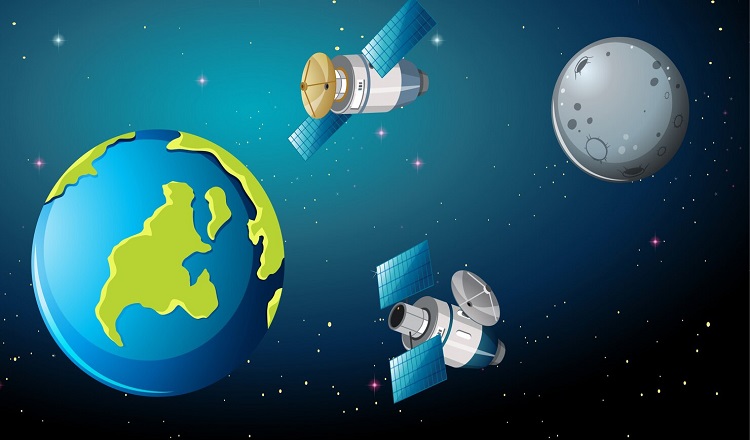Do we inhabit a solitary universe? Since the invention of modern technology, the search for extraterrestrial life has become increasingly sophisticated and scientific. This question has interested people for ages. There has been an increase in the number of research initiatives and missions aimed at determining the answer to this age-old issue since the possibility of life on other planets has recently become a major topic of discussion.
The possibility of life existing on other planets has emerged as a major field of study for researchers all around the world. People have been fascinated by the quest for extraterrestrial life for millennia, and today there is a greater interest than ever in finding out if there are any other life forms in the vastness of the cosmos. The search for proof of extraterrestrial life is getting more and more fascinating as we continue to explore the cosmos and find new planets and moons that may contain life.
Join us as we embark on a voyage of discovery as we investigate the potential for extraterrestrial life. We’ll take a deeper look at the intriguing field of astrobiology and the continuous quest for life beyond Earth, from the most recent advancements in exoplanet research to the thrilling missions done by NASA and other space organisations. Prepare yourself for an investigation of one of the most fascinating subjects in human history that is both educational and amusing.
The Look for Life on Other Planets
A wide range of sophisticated instruments and methods are used in the hunt for alien life to look for indications of life outside of our solar system. Astronomers frequently use telescopes to look for planets orbiting far-off stars. For instance, thousands of exoplanets that may harbour life have been found thanks in large part to the Kepler satellite telescope. Other planets and moons in our solar system are explored using rovers and landers to learn more about their makeup and habitability. Spirit, Opportunity, and Curiosity, NASA’s Mars rovers, have produced a number of ground-breaking findings that have advanced our knowledge of the possibility of life on Mars.
A number of significant discoveries in recent years have deepened our understanding of the possibility of life on other worlds. Kepler-452b, the first exoplanet found in a habitable zone that is comparable in size to Earth, was found in 2015 by NASA’s Kepler mission. Phosphine gas was found in the atmosphere of Venus in 2020 by astronomers using the Atacama Large Millimeter/submillimeter Array (ALMA) in Chile, which may be a hint of microbial life. These and other findings emphasise the value of ongoing study and exploration in the quest for extraterrestrial life.
livable areas
The “Goldilocks zone,” often referred to as the habitable zone, is the region of space surrounding a star where conditions are just right for liquid water to exist on a planet’s surface. This is thought to be a crucial component in determining whether a planet has the capacity to support life as we know it. The distance of a planet from its host star, together with other elements like the star’s temperature and size, determines the habitable zone.
In our own solar system, a number of planets and moons are thought to be in their respective habitable zones. For instance, Mars has a thin atmosphere that could be able to support microbial life while being just beyond the habitable zone of our Sun. One of Jupiter’s moons, Europa, has a deep ocean that might be able to sustain life and is also located in the planet’s habitable zone. Enceladus, the moon of Saturn, features geysers on its surface that could possibly host microbial life. It also has a subterranean ocean. These findings emphasise the value of researching both our solar system and other star systems in the hunt for potentially habitable planets and extraterrestrial life.
Exoplanets
A planet that circles a star outside of our solar system is referred to as an exoplanet, or extrasolar planet. They are often found by observing changes in a star’s light output, such as modest brightness variations or wobble brought on by a planet’s gravitational influence. Other techniques involve directly photographing the planet or observing a planet transit in front of its star.
Kepler-186f, which is roughly the same size as Earth and orbits within its star’s habitable zone, TRAPPIST-1e, which is also comparable in size to Earth and is a part of a system with seven Earth-sized planets, and HD 209458b, which is known to have an atmosphere and was the first exoplanet to have its atmosphere detected are some of the most intriguing exoplanets that have been discovered to date.
These discoveries have increased our knowledge of the potential for life on other worlds and reignited enthusiasm in the hunt for terraforming exoplanets. Scientists seek to find suitable destinations for further exploration by examining the characteristics and atmospheres of these planets and to shed light on the possibility of extraterrestrial life.
Astrobiology
The study of the beginning, development, dispersion, and future of life in the universe is known as astrobiology. To comprehend the potential for life beyond Earth, this interdisciplinary field uses techniques and knowledge from astronomy, biology, geology, chemistry, and other sciences.
Astrobiologists are working to find the answers to several important issues surrounding the hunt for extraterrestrial life. What are the prerequisites for life to exist and how prevalent are these prerequisites in the cosmos is one of the most fundamental concerns. Other puzzles include how life came to be on Earth and whether it could have started elsewhere in the cosmos. How far can life go and how resistant is it to severe circumstances? Astrobiologists want to learn more about the origins and evolution of life, as well as the potential for life to exist on other planets and moons in our solar system and beyond, by investigating the possibility of life existing somewhere other than Earth.
The Function of NASA in the Look for Extraterrestrial Life
NASA has created and carried out a number of missions and initiatives that have contributed significantly to the quest for extraterrestrial life. One such project is the Kepler mission, which was launched in 2009 and has found thousands of exoplanets. Finding proof of past or current life on the Red Planet is another goal of NASA’s Mars missions, such as the Mars rovers and the planned Mars Sample Return mission.
NASA has recently uncovered some fascinating discoveries that have advanced our knowledge of the potential for life to exist on other planets. The Curiosity rover, for instance, discovered organic compounds on Mars, indicating that the planet may have once supported the conditions for life to exist. Additionally, Europa, a moon of Jupiter, showed signs of water vapour, which may be able to sustain life, according to the Hubble Space Telescope. These findings underscore NASA’s vital contribution to the hunt for extraterrestrial life, along with current and upcoming missions.
Conclusion
In conclusion, the investigation into the potential for extraterrestrial life is an exciting and continuous endeavour that encompasses numerous scientific fields and organisations, including NASA. Scientists have produced important discoveries that have advanced our knowledge and comprehension of the universe and the potential for life beyond Earth by employing telescopes, rovers, and spacecraft. Exoplanets, astrobiology, and habitable zones are just a few fields of research that are advancing our knowledge of the likelihood of life existing outside of our solar system.
We still seek out new discoveries and insights because of our curiosity and feeling of awe, despite the difficulties and constraints of exploring the vastness of space. One of the most important projects currently underway could offer solutions to some of the most important concerns about our role in the cosmos: the search for extraterrestrial life.
We are constantly reminded of the size and complexity of the cosmos and our continual quest to understand it as we investigate the potential for life on other worlds. It’s a mind-blowing adventure that makes us wonder about the secrets of life and the possibility of life on planets other than our own.
Read More You May Like:











